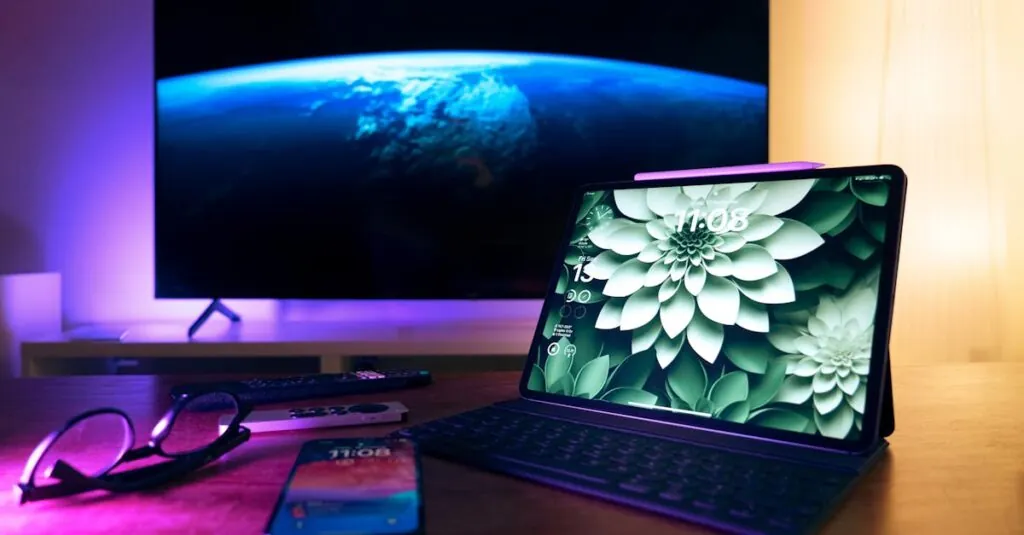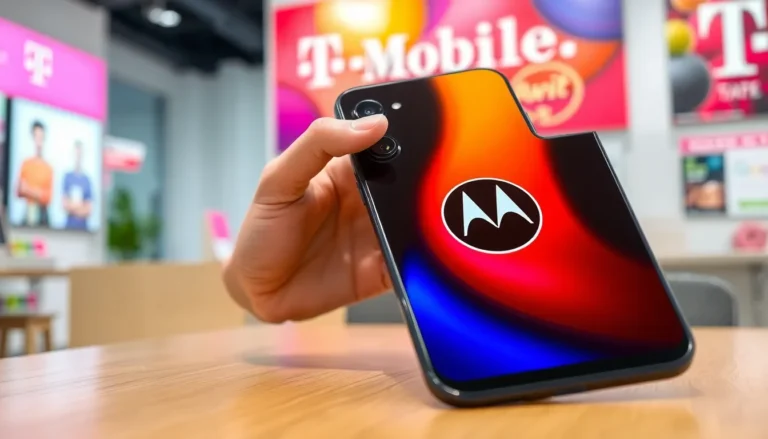In a world where everyone’s glued to their phones, mobile game design has become the secret sauce to capturing hearts and minds. Imagine crafting a virtual universe where players can escape reality, battle dragons, or even build their own empires—all from the comfort of their couch. It’s not just about flashy graphics or catchy soundtracks; it’s about creating an experience that keeps players coming back for more, like that one snack they can’t resist.
Table of Contents
ToggleUnderstanding Mobile Game Design
Mobile game design encompasses the creative process of developing games for smartphones and tablets. This field requires a blend of artistry, technology, and gameplay mechanics to captivate players.
What Is Mobile Game Design?
Mobile game design refers to the structured approach of creating engaging experiences specifically for handheld devices. Designers focus on intuitive interfaces, touch-based controls, and mobile-specific features. This process includes everything from the game concept and story to the visual design and sound elements. Teams collaborate to ensure smooth gameplay, optimized graphics, and an engaging user experience. Each aspect contributes to the overall enjoyment and success of the game.
Importance of Mobile Game Design
Mobile game design plays a crucial role in attracting and retaining players. Engagement is a primary focus for designers, as compelling mechanics keep players returning. User retention hinges on offering levels of fun and challenge that players crave. Successful games often rely on community interaction, social features, and regular updates to maintain interest. Revenue generation also benefits from well-executed mobile designs through in-app purchases and advertisements. Ultimately, effective mobile game design shapes the digital landscape and influences gaming trends.
Key Principles of Mobile Game Design
Mobile game design hinges on creating user-friendly experiences and captivating visual elements. Designers focus on principles that enhance engagement and increase player retention.
User Experience Considerations
User experience ranks as a top priority in mobile game design. Players expect smooth navigation, intuitive controls, and responsive touch interactions. Feedback mechanisms, like haptic responses, heighten immersion. Designers also consider loading times; quick gameplay minimizes frustration. Testing with diverse user groups ensures accessibility, making games enjoyable for everyone. Integrating tutorial systems helps new players adapt swiftly, improving overall satisfaction.
Visual Design Elements
Visual design serves as a critical aspect of mobile game appeal. Eye-catching graphics draw players in, while cohesive art styles enhance the experience. Color schemes should evoke emotions and establish a game’s theme. Animations bring static elements to life, creating dynamic interactions. Designers often use visual hierarchy to guide players through gameplay, highlighting important features. Responsive layouts should cater to different screen sizes, ensuring visuals remain effective across devices.
Mobile Game Design Process
Mobile game design follows a structured approach to ensure a captivating player experience. This process includes several key stages that evolve from initial ideas to polished games.
Concept Development
Concept development initiates the design process. Designers outline game ideas, identify target audiences, and establish core mechanics. Brainstorming sessions allow for creativity, enabling the exploration of themes, narratives, and gameplay styles. Research into current market trends informs designers about successful elements to incorporate. New technologies could inspire unique interactions, while the combination of these factors provides a solid foundation for the game’s vision.
Prototyping and Testing
Prototyping plays a crucial role in mobile game design. Designers create functional models to test ideas and gather feedback. Initial prototypes focus on core gameplay mechanics, enabling quick adjustments. Player feedback shapes future development, identifying areas for improvement and emphasizing user experience. Rigorous testing also assesses performance across different devices, ensuring optimal functionality. Iterative testing processes enhance gameplay, leading to a more engaging final product.
Finalizing Designs
Finalizing designs integrates feedback and refines the game. Designers optimize graphics, user interfaces, and sound elements based on testing results. Attention to detail becomes essential, ensuring that visual appeal aligns with gameplay. Quality assurance checks verify that all features function seamlessly. Polishing game mechanics based on user input enhances overall enjoyment and satisfaction. Successful finalization prepares the game for launch, ready to attract and engage players.
Trends in Mobile Game Design
Mobile game design evolves rapidly, influenced by technological advancements and creative inspirations. Designers leverage trends to enhance gameplay and engage users effectively.
Emerging Technologies
Innovative technologies reshape mobile game design. Augmented reality (AR) adds immersive layers, allowing players to interact with the real world. Virtual reality (VR) creates rich environments for deeper player engagement. Cloud gaming enables high-quality experiences on various devices, bypassing hardware limitations. Blockchain technology introduces unique in-game assets, enhancing ownership and trading options. Artificial intelligence personalizes gameplay, adapting challenges based on player behavior. Integration of 5G technology ensures smooth multiplayer experiences, reducing latency and enhancing real-time interactions. Many designers explore these technologies to keep games dynamic and appealing to a broad audience.
Design Inspirations
Designers draw inspiration from diverse sources to create unique mobile games. Cultural elements often influence game aesthetics and narratives. Nature and architecture provide visual references, fueling creativity in graphics and environments. Popular media, such as movies and television, spark ideas for characters and storylines, connecting with players through familiar themes. Historical events offer rich backdrops for gameplay, allowing exploration of different eras. Trends in popular culture also shape gaming mechanics, making them relatable for players. Collaborations with artists and brands merge various styles, fostering innovation in design. By tapping into these inspirations, designers craft engaging experiences that resonate with players.
Mobile game design is an ever-evolving field that plays a crucial role in shaping player experiences. By focusing on user-friendly interfaces and captivating visuals, designers can create games that not only attract but also retain players. The integration of emerging technologies and innovative storytelling enhances engagement, making each game a unique adventure.
As the industry continues to grow, the importance of community interaction and regular updates becomes evident. These elements not only foster loyalty but also ensure that games remain fresh and exciting. Ultimately, successful mobile game design blends creativity with technology, resulting in immersive experiences that resonate with players worldwide.




